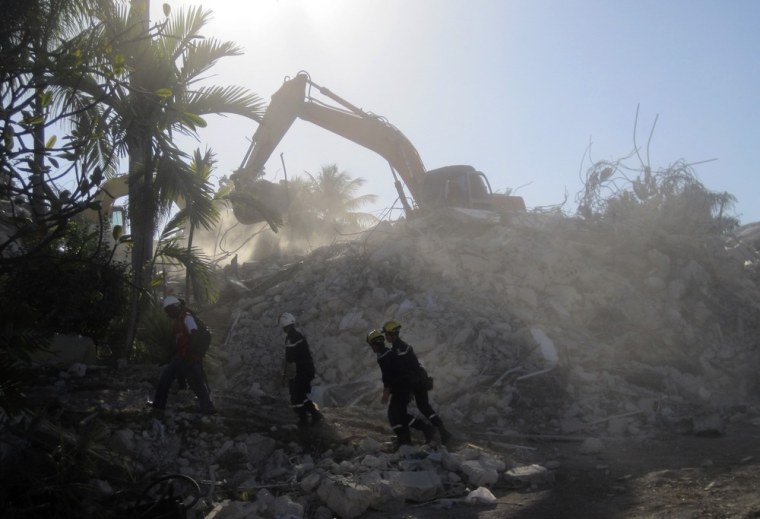The Hotel Montana, a four-star resort in Haiti, came crashing down during the country's massive Jan. 12 earthquake — a surprising collapse, since the hotel had been sturdily built on presumably solid ground.
As Haiti continues to sift through the damage, scientists have found that the earthquake's energy spread in an unusual way. It turns out that the topography of the Earth's surface is just as important as the ground underneath in determining how an earthquake spreads, a study detailed in the Oct. 17 online edition of the journal Nature Geoscience reveals. Two other recent studies, also published in Nature Geoscience, found that the Haiti quake was the result of a rupture along a previously unknown fault and that it generated several small tsunamis.
As Haiti rebuilds, these new studies will help identify regions of the country that are more vulnerable to earthquakes than previously thought.
Surprising shaking
When the magnitude-7.0 earthquake rocked the country, more than 200,000 people died, 1.5 million were left homeless, and the damage totaled between $9 billion and $14 billion. The extent of the damage was not surprising, considering the quake struck Port-au-Prince, which is filled with poorly constructed buildings and sits atop a kind of rock that allows the shaking to spread easily.
But one seemingly stable area, along a foothill ridge, suffered a surprising amount of damage.
Ground motions during the Haiti earthquake were significantly amplified along this mountain ridge, causing substantial structural damage. Felled along with the Hotel Montana were two United Nations buildings, the Hotel Christophe, the French ambassador's home and a number of substantial private homes.
"It was a surprise," said Susan Hough, a study team member with the U.S. Geological Survey in Pasadena, Calif. "It's a ridge in an affluent part of the city, and it really got hammered."
Topography — the shape of the Earth's surface — is not generally considered when geologists study an area's vulnerability to earthquakes. Geologists typically focus on the kinds of rocks underground.
In the new study, Hough and her colleagues measured aftershocks following the Haiti quake to assess how ground motion varied in different parts of Port-au-Prince.
Importance of topography
They compared sites located on soft sediments, hard ground and rocky, mountainous ridges. As expected, structures built on soft sediments experienced enhanced shaking. However, the strongest ground motions occurred on the mountainous ridge where the Hotel Montana collapsed.
"We suggest that microzonation maps can potentially be significantly improved by incorporation of topographic effects," the authors write in their study. Microzonation maps subdivide earthquake-prone areas into smaller zones of risk based on particular factors, such as landslide susceptibility and ground shaking.
Pinning down how topography amplifies an earthquake's energy — be it by steepness or width of a ridge, for example — will take longer, said the authors, but the initial findings could help guide the rebuilding effort.
"When you rebuild, you're going to have to take these places into account," Hough told OurAmazingPlanet.
